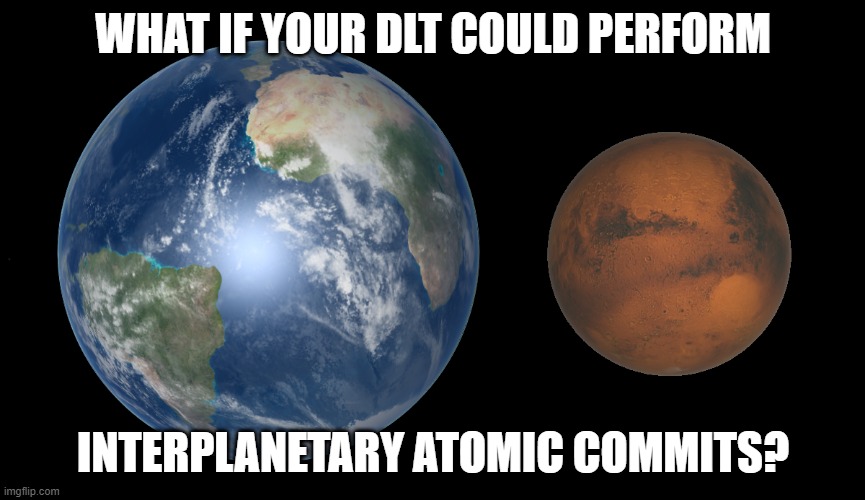This is something that& #39;s been on my "super very nice to have" list for quite some time & as I& #39;ve been meeting heavy for the past few days I thought I& #39;d throw the problem at the #flexathon code base ...
@elonmusk this is for you buddy!
#blockchain #crypto #defi #dlt
@elonmusk this is for you buddy!
#blockchain #crypto #defi #dlt
I set up 2 disjoint networks that are independent yet know about each other. Same genesis on each network, but with a different "magic" that acts as it& #39;s ID
State hashes are prefixed with the network ID for routing.
Most of the #cerberus code stays the same ...
State hashes are prefixed with the network ID for routing.
Most of the #cerberus code stays the same ...
The principles are the same as a regular non-interplanetary network. I& #39;m looking for a 2/3rds vote majority in all shards before committing.
I also built in a bunch of latency on messages that pass between the two networks to simulate Earth <> Mars comms (~14 mins).
I also built in a bunch of latency on messages that pass between the two networks to simulate Earth <> Mars comms (~14 mins).
Aside from the latency & the routing, the network acts in the same way.
Assume that I& #39;m on Earth & I wanna send some funds to Mars.
My funds live in shard E10 & I& #39;m sending them to shard M20. (E = Earth, M = Mars)
Assume that I& #39;m on Earth & I wanna send some funds to Mars.
My funds live in shard E10 & I& #39;m sending them to shard M20. (E = Earth, M = Mars)
The Earth nodes know that the Mars network exists & that my funds are being sent there. So they send the transaction to Mars, where nodes pick it up.
Both E & M nodes then do the usual #cerberus voting to produce a certificate with a yes/no decision.
Both E & M nodes then do the usual #cerberus voting to produce a certificate with a yes/no decision.
The E nodes communicate those certificates to the M nodes and vice versa.
If both certificates are of a 2/3rds yes decision, both sides commit. If not, both sides fail.
If both certificates are of a 2/3rds yes decision, both sides commit. If not, both sides fail.
"Local" transactions that don& #39;t leave the planet (lol that sounds so absurd) work in the same way, except of course there is a LOT less latency.

 Read on Twitter
Read on Twitter


